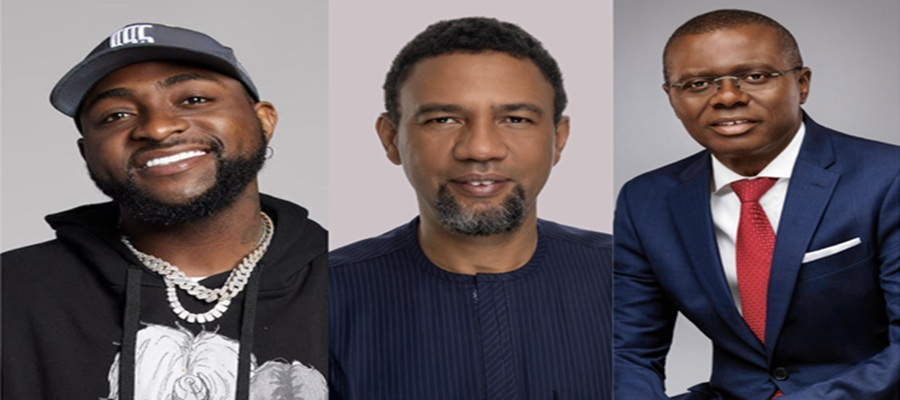Broadcasting
African Marketers Simply Cannot Afford to Ignore Snapchat: Here’s Why

By Alistair Errington, Snap Partner Director at Ad Dynamo by Aleph
Over the years, Snapchat has consistently defied its most ardent critics. The platform has grown from strength to strength rather than fading away as existing social networks mimic its features, and new ones, such as TikTok, target the same audience. This illustrates how people want more options and choices when it comes to social media (something that its critical advertisers understand).

As recorded by Statista, Snapchat boasts 347 million daily active users in Q2 2022, up more than 50 million from the same quarter in 2021. Data Reportal also sheds light on Snapchat’s presence with a total advertising reach of more than 617 million people. This puts it in the top 10 social networks globally. It is, in other words, a platform that advertisers simply cannot afford to ignore. This is as true on the African continent as it is anywhere else
In Nigeria, for example, Snapchat has more than 9 million users in addressable reach for advertising. This puts it on par with Instagram, and well ahead of platforms such as LinkedIn.
With this in mind, it is worth looking at what makes Snapchat so popular, why it’ll continue to be a good marketing option, and how advertisers can best take advantage of it.
Embracing technological evolution
Key to Snapchat’s success in recent years has been its willingness to continue evolving and embracing new technologies as they emerge. In particular, it utilises augmented reality (AR) in ways that appeal to its user base. Snapchat is a camera-first app, encouraging its audience to create personal authentic content featuring themselves.
For instance, some 250 million users make use of AR tools that allow them to add 3D experiences in the real world and overlay graphics on images every day. But the platform’s AR ambitions go far beyond augmenting the world only for entertainment. Earlier this year, Snapchat announced updates to its AR shopping features which make it easier for users to try out AR versions of a retailer’s product and to buy directly from the AR experience on Snapchat.
As a result, Snapchat isn’t just a place where brands can advertise to their customers. In fact, it’s more like a virtual showroom that allows people to see what products would look like on them or in their homes. ‘Product trial’ has a whole new meaning.
But even its more prosaic offerings give advertisers a lot to work with. Take Spotlight, its short-form video offering, for example. Spotlight offers a place where an infinite stream of full screen videos can be engaged with, tailored to the user’s interests. It saw instant success, growing 60% in activity year on year since mid-2021. Based on this growth, Snapchat announced earlier this year that they were testing ads on Spotlight, having successfully rolled them out in a revenue-sharing model with Snap Star creators.
Hyper-connected digital natives
It’s also important to highlight that Snapchat has been developing its technology for 10 years, and its followers have remained loyal through that evolution. Retaining a community that has grown with the app, Snapchat capitalises on the millennial generation and is constantly accruing a younger generation of users due to the cutting edge experiences it offers.
Zooming into Africa, these younger generations are becoming the centre of attention for Africa. The majority of purchasing power will reside in this audience, not to mention how connectivity in these countries becomes ubiquitous. Nigeria serves as a prime example of a market that is well positioned for digital growth – both in digital users and an audience to be capitalised on. With the combination of internet penetration currently sitting around 51%, and over 70% of the users on Snapchat being 21+ in Nigeria, the opportunity for advertisers is there in the short term to bring returns and prepped for the long term to invest in. Bundle this with a median age of 18 and the expected addition of 35 million more internet users by 2026 in Nigeria, and Snapchat anchors itself in the helm of a booming economy.
There is also a very exciting convergence taking place in the digital sphere with this spike in internet users: by 2025, nearly 75% of the global population and all social/communication apps will be frequent AR users. Right now, Snapchatters spend over 3 minutes a day engaging with AR experiences alone and more than 30 minutes on the app everyday – nevermind the fact that they open the camera over 30 times a day resulting in 2.4M snaps every minute around the world.
And one of the most interesting nuggets to these behaviours is that it’s done by an audience barely found anywhere else. On any given day, 95% of Snapchat users aren’t on TikTok, 84% of Snapchat users aren’t on Twitter and 47% of Snapchat users aren’t on Facebook. Snapchat hosts a unique audience.
The right messaging with the right partnerships
Of course, advertisers can’t simply hope to slap their existing messaging onto Snapchat templates and expect great results. They have to ensure that the messaging matches the platform and that they’re reaching the people they want with it.
Here, the right partner can help. Brands should look to work with a media sales partner that not only understands platforms such as Snapchat inside out but also has extensive experience working in growth markets like Nigeria.
In doing so, they can reap the full benefits of being on a rapidly growing platform that’s becoming increasingly significant on the African continent.
Broadcasting
MultiChoice Talent Factory Calls for Entries Into Fully Funded Film Training Programme

MultiChoice Talent Factory (MTF), a Pan-African film and television training institution, has announced the opening of applications for its 2026 intake.

MultiChoice
The fully funded programme is open to African graduates aspiring to become directors, filmmakers, scriptwriters, producers and storytellers.
According to MultiChoice, the nine-month accredited curriculum combines online learning with intensive in-person training, and is designed to balance theoretical knowledge with practical immersion.
MTF academies are located in Kenya, Nigeria and Zambia, and serve aspiring filmmakers from 14 African countries. Since its inception in 2018, the initiative has trained 296 filmmakers, with graduates producing more than 42 movies aired on DStv, GOtv and Showmax platforms.
Organisers said alumni of the programme have gone on to establish over 50 production companies, while many continue to work within the MultiChoice ecosystem.
Graduates have also won accolades at the Africa Magic Viewers’ Choice Awards, Kalasha Awards, Uganda Film Festival and Women in Film Awards.
Applications for the 2026 intake close on Feb. 27, 2026. Interested candidates can visit https://apo-opa.co/3XW53oE for programme requirements.
Broadcasting
Davido, Babajide Sanwo-Olu, Karl Toriola, Others To Be Honoured At The Most Influential People of African Descent Awards In Lagos

Most Influential People of African Descent (MIPAD) is excited to announce the Lagos Diaspora Experience 2025, a week-long celebration of African art, culture, innovation, and connection, culminating in the End of the Year Awards & Celebration on Sunday, December 21st, 2025, in Lagos, Nigeria.

The Most Influential People of African Descent Awards
This historic occasion marks the first time the world-famous Most Influential 100 Recognition & Awards Ceremony—traditionally held in New York on the sidelines of the United Nations General Assembly (UNGA)—will be hosted in Lagos, Nigeria.
The week will feature events such as Diaspora Day at the Fela Exhibition (Afrobeat Meets Diaspora), Cultural Heritage Day, and Business Leadership Luncheons, all culminating in the awards celebration.
The evening will honor the Best & Brightest of the Year, recognizing exceptional individuals and institutions whose work has advanced Global African Achievement and Black Excellence across business, government, media, culture, and technology.
Key Recognitions for 2025
– Governor of the Year & City of the Year: His Excellency Babajide Sanwo-Olu, Governor of Lagos State, honored alongside Lagos as City of the Year for its global leadership in culture, innovation, tourism, and diaspora engagement.
– Her Excellency Hannatu Musa Musawa, Minister of Art, Culture, Tourism and Creative Economy, will be honoured as Minister of the Year for her contribution to the creative economy’s role in nation branding and cultural diplomacy.
– Most Influential Woman of the Year: Olorì Atúwàtse III, Queen Consort of the Warri Kingdom
– Most Influential Man of the Year: Adewale Tinubu, Group Chief Executive, OANDO
– CEO of the Year: Karl Toriola, Chief Executive Officer of MTN Nigeria; who will deliver a keynote address, recognized for his transformative leadership and impact on Nigeria’s telecommunications and digital economy.
Others include; Karl Toriola of MTN as CEO of the year, Uche Pedro of Bella Naija as Lifestyle Personality Of The Year, Ojy Okpe of Artise News as Most Influential News Anchor Of The Year, Stephanie Busari as Media Executive of the Year, Kayode Okikiolu as Pressman of the year, Davido as Artist of the year and several others.
In celebrating this year’s honorees, Michael Ehindero, Managing Director, Pernod Ricard Nigeria, owners of Martell Cognac, who emerged as Brand Of The Year expressed deep appreciation for the brand’s continued global recognition, saying: “It’s a great reward for the team who’s delivered Martell excellently in Nigeria over the years.
“We say thank you to the teams, we say thank you to our consumers and we say thank you to MIPAD.
“Martell has a lot of promising experiences in the years to come in Nigeria and with this we invite you over to Nigeria to experience Detty December”.
The ceremony will also celebrate the achievements of the Class of 2025 Honorees, alongside past Nigerian honorees who were unable to attend their year of recognition in New York.
“For the first time, we’re bringing our world-famous recognition platform home to celebrate excellence within the Global Africa Family — right here in Lagos,” said Kamil Olufowobi, Founder & Chairman of MIPAD. “This is more than an event; it’s a movement uniting the best of us — connecting, collaborating, and working together to change the world.”
Event Details
📍 Lagos, Nigeria
– Friday, Dec 19 – #DettyDec Diaspora Day at Fela Exhibition FREE
– Sunday, Dec 21 – End of Year Recognition & Award Ceremony STRICTLY BY INVITATION
🎟️ RSVP: https://rsvp.oakenevents.com/mipad
Broadcasting
NCC Blocks Piracy Sites as Nollywood Faces Rising Digital Theft

Nigerian Copyright Commission (NCC) has called for urgent adoption of advanced digital protections after blocking seven piracy sites amid escalating online threats to Nollywood content.

The call was made during a webinar hosted by Greychapel Legal titled “Clicks, Streams, and Copyright: Who Owns Nollywood’s Digital Future?”, which brought together filmmakers, regulators, entertainment lawyers and media strategists to examine how content ownership and copyright enforcement are being reshaped by the digital age.
Lynda Alphaeus, director and head of the NCC Lagos Office, said the Commission has intensified its efforts to combat piracy across digital channels and is upgrading its operations to meet emerging threats.
According to her, Nigeria’s new Copyright Act was deliberately updated to strengthen creators’ rights amid the explosion of online distribution.
“NCC has worked, and is still working tirelessly to adapt Nigeria’s legal framework to cope with digital distribution challenges. We now have the power to block networks publishing illegal content, and we have already blocked seven websites distributing pirated Nigerian works,” Alphaeus said.
She revealed that the Commission has established a special taskforce known as the STOP Unit to coordinate anti-piracy operations online, alongside new awareness campaigns targeting local markets and schools to educate content creators and the public on copyright obligations.
Alphaeus urged filmmakers and producers to take ownership of their digital safety by deploying available technological protections to safeguard their intellectual property.
She explained that tools such as encryption help prevent unauthorised copying, blockchain technology offers immutable proof of ownership, digital watermarking allows creators to trace illegal uploads, while cloud security and regular offline backups protect creative files before they reach the market.
While noting that copyright in Nigeria does not legally require registration, she stressed that registering one’s work strengthens protection and provides legal presumptions that can be vital in enforcement.
“Whatever you register is presumed to be yours until proven otherwise,” she said, urging creators to invest in copyright knowledge as part of their business strategy.
Other speakers at the webinar reinforced the urgency of protecting Nollywood’s digital assets.
James Omokwe, film director, noted that while streaming platforms have created unprecedented opportunities for visibility and monetisation, they have also opened new vectors for intellectual property theft and unauthorised redistribution.
Solafunmi Laelle, media strategist, added that audience data, which streaming platforms rely heavily on, will increasingly determine leverage and value in film licensing negotiations.
According to her, creators who lose control of their intellectual property, whether through piracy or unfavourable contracts, also lose access to valuable data that could shape their long-term earnings.
Nky Ofeimun, entertainment lawyer, emphasised the need for creators to understand the contractual implications of ownership, platform exclusivity, and reversion rights.
She noted that many filmmakers still underestimate how quickly digital copies can be illegally duplicated or uploaded once control is lost.
The panelists agreed that as Nollywood deepens its digital footprint, piracy will continue to evolve and become more sophisticated.
They stressed that the industry must respond with equally sophisticated tools, stronger contract negotiation, and improved education around copyright.

 News2 days ago
News2 days agoSiBAN New Executive Council to Champion Vision for Nigeria’s Digital Economy

 Broadcasting3 days ago
Broadcasting3 days agoDavido, Babajide Sanwo-Olu, Karl Toriola, Others To Be Honoured At The Most Influential People of African Descent Awards In Lagos

 E-Financial2 days ago
E-Financial2 days agoTax Reform or Financial Exclusion? The Trouble with Mandatory TINs

 General News2 days ago
General News2 days agoNITDA DG Calls for Innovation-Led Economic Rebirth @ Kano Startup Weekend

 Telecom2 days ago
Telecom2 days agoNCC Blames NOGASA for Abuja Outage

 Telecom1 day ago
Telecom1 day agoAirtel Africa Partners Starlink to Launch Direct-to-cell Service in 14 Markets

 News2 days ago
News2 days agoAPC National Chairman Appoints Mr. Abimbola Tooki as Special Adviser on Media

 E-Business1 day ago
E-Business1 day agoCheck Point Reveals Nigeria as Second Most Targeted African Country for Cyberattacks in November



























